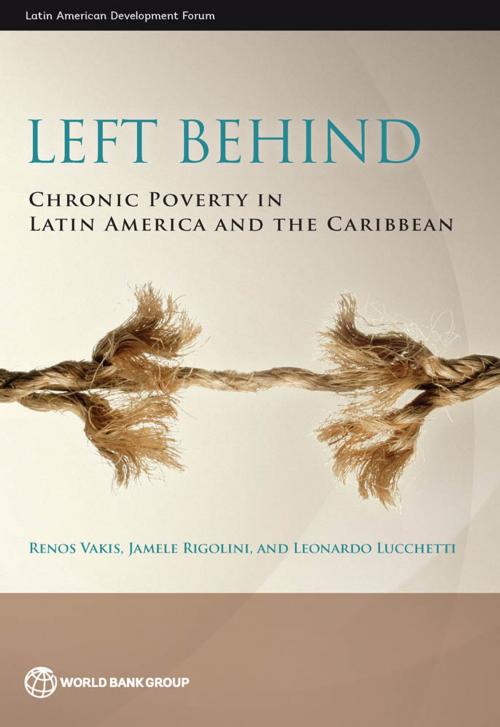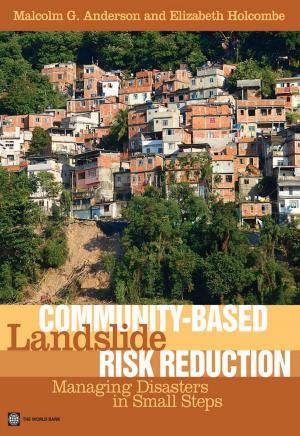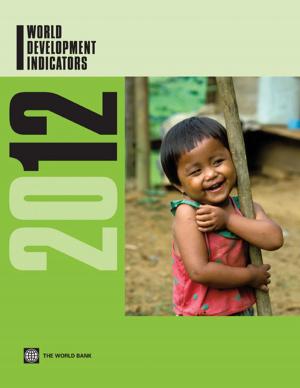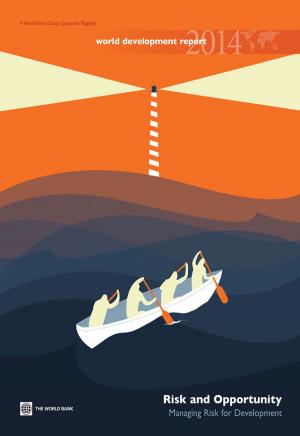Left Behind
Chronic Poverty in Latin America and the Caribbean
Business & Finance, Economics, Microeconomics, Economic Development| Author: | Renos Vakis, Jamele Rigolini, Leonardo Lucchetti | ISBN: | 9781464806612 |
| Publisher: | World Bank Publications | Publication: | July 26, 2016 |
| Imprint: | World Bank Publications | Language: | English |
| Author: | Renos Vakis, Jamele Rigolini, Leonardo Lucchetti |
| ISBN: | 9781464806612 |
| Publisher: | World Bank Publications |
| Publication: | July 26, 2016 |
| Imprint: | World Bank Publications |
| Language: | English |
One out of every five Latin Americans or around 130 million people have never known anything but poverty, subsisting on less than US$4-a-day throughout their lives. These are the region´s chronically poor, who have remained so despite unprecedented inroads against poverty in Latin America and the Caribbean since the turn of the century. Left Behind: Chronic Poverty in Latin America and the Caribbean takes a closer look at the region’s entrenched poor, who and where they are, and how existing policies need to change in order to effectively assist them. The book shows significant variations of rates of chronic poverty both across and within countries. Within a single country, some regions show incidence rates up to eight times higher than the lowest. Despite the higher rates of chronic poverty in rural areas, chronic poverty is as much an urban as a rural issue. In fact, considering absolute numbers, urban areas in many countries, including Chile, Brazil, Mexico, Colombia and the Dominican Republic, have more chronic poor than rural areas. Undoubtedly the region has come a long way during the decade in terms of poverty reduction, guided by a mix of sustained growth and increased levels in amounts and quality of public spending and programs targeted directly or indirectly to the chronic poor. While improving endowments and the context where the chronic poor live is a necessary condition going forward, the decade’s experience suggests that it may not be enough to reach the chronic poor. The book posits that refinements to the existing policy toolkit †“ as opposed to more programs †“ may come a long way in helping the remaining poor. These refinements include intensifying efforts to improve coordination between different social and economic programs, which can boost the income generation process and deal with the intergenerational transmission of chronic poverty by investing in early childhood development. Equally important though, there is an urgent need to adapt programs to directly address the psychological toll of chronic poverty on people’s mindset and aspirations, which currently undermines the effectiveness of the existing policy efforts.
One out of every five Latin Americans or around 130 million people have never known anything but poverty, subsisting on less than US$4-a-day throughout their lives. These are the region´s chronically poor, who have remained so despite unprecedented inroads against poverty in Latin America and the Caribbean since the turn of the century. Left Behind: Chronic Poverty in Latin America and the Caribbean takes a closer look at the region’s entrenched poor, who and where they are, and how existing policies need to change in order to effectively assist them. The book shows significant variations of rates of chronic poverty both across and within countries. Within a single country, some regions show incidence rates up to eight times higher than the lowest. Despite the higher rates of chronic poverty in rural areas, chronic poverty is as much an urban as a rural issue. In fact, considering absolute numbers, urban areas in many countries, including Chile, Brazil, Mexico, Colombia and the Dominican Republic, have more chronic poor than rural areas. Undoubtedly the region has come a long way during the decade in terms of poverty reduction, guided by a mix of sustained growth and increased levels in amounts and quality of public spending and programs targeted directly or indirectly to the chronic poor. While improving endowments and the context where the chronic poor live is a necessary condition going forward, the decade’s experience suggests that it may not be enough to reach the chronic poor. The book posits that refinements to the existing policy toolkit †“ as opposed to more programs †“ may come a long way in helping the remaining poor. These refinements include intensifying efforts to improve coordination between different social and economic programs, which can boost the income generation process and deal with the intergenerational transmission of chronic poverty by investing in early childhood development. Equally important though, there is an urgent need to adapt programs to directly address the psychological toll of chronic poverty on people’s mindset and aspirations, which currently undermines the effectiveness of the existing policy efforts.















